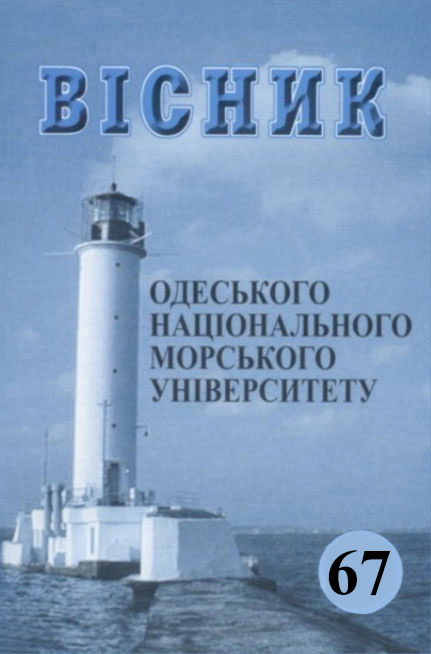Methods for calculation of elements in bending according to Eurocode 3
Main Article Content
Abstract
The use of European design standards in Ukraine, in particular for steel structures − Eurocode 3, has become possible since July 2014. Taking into account the fact that Ukraine has received the status of a candidate member of the European Union, the development and application of these norms is an urgent need. Bending and, accordingly, the perception of a bending moment is a common task that a design engineer has to solve. European codes, as well as national codes of Ukraine, provide in this case two checks of the cross-section: capacity and buckling resistance. Checking the capacity of special difficulties does not cause. Checking the buckling resistance of a bending element is somewhat more difficult due to the need to determine the reduction factor for the relevant buckling mode. This coefficient, in turn, depends mainly on non-dimensional slenderness of the element. Methods for calculating the buckling resistance of the element are determined based on the possibilities of obtaining the non-dimensional slenderness of the element. The key point of the methodology is the calculation of the non-dimensional slenderness. Three calculation methods defined:
- lateral torsional buckling curves 6.3.2.2 [1].
This method requires obtaining a critical moment for lateral-torsional buckling (Mcr). It should be noted that the standards do not provide formulas for its calculation, but indicate that obtaining Mcr based on gross cross sectional properties and takes into account the loading conditions, the real moment distribution and the lateral restraints.
There are three cases for this method:
- general case. It is used for any types of sections. It is characterized by the most accurate ("rigid") assessment of the element's behavior during buckling.
- special (local) case item. 6.3.2.3 [1] for rolled or equivalent welded sections. For this type of section, the codes provide formulas that eventually lead to a slightly higher bearing capacity than for the general case.
- special (local) case, using a simplified method for determining the nondimensional slenderness without the need to calculate Mcr. The calculation is quite simple (based on some table values), but with some loss of efficiency [9].
- simplified assessment methods for beams with restraints in buildings item 6.3.2.4 [1]. This method does not require the calculation of Mcr.
- general method for lateral and lateral torsional buckling. The following method item 6.3.4 [1] may be used where the previous methods do not apply. Guid [9] indicates, that method is relatively new, and, as such, has not yet been subjected to the same level and breadth of scrutiny as the more established methods.
Some national codes limits application of the method to straight members subject to in-plane mono-axial.
The paper considers the first method for calculating bending elements. A comparison is made for the three indicated cases. It is noted that the second case (for rolled or equivalent welded sections) gives buckling resistance approximately 20 % higher than for the «rigid» first case. The third case gives a result close to the first general case, if the flexibility of the bending element is not higher than 100.
Article Details
References
2. DSTU-N B EN 1993-1-5:2010. Proektuvannya stalevykh konstruktsiy. Plastynchasti konstruktyvni elementy. – K.: Minbud Ukrayiny, 2011. – 91 s.
3. DSTU-N B EN 1993-1-8:2010. Proektuvannya stalevykh konstruktsiy. Proektuvannya zʺyednanʹ. – K.: Minbud Ukrayiny, 2012. – 204 s.
4. Pryklady rozrakhunku stalevykh konstruktsiy budivelʹ vidpovidno do Yevrokodu 3 ta natsionalʹnykh dodatkiv Ukrayiny / M. Britl, D. Braun, A. Bilyk, E. Kovalevsʹka. Ukrayinsʹkyy tsentr stalevoho budivnytstva, 2015. – 82 s.
5. Rozrakhunok stalevykh konstruktsiy budivelʹ vidpovidno do Yevrokodu 3 ta natsionalʹnykh dodatkiv Ukrayiny / М. Britl, D. Braun, N.A. Byelyayev, A.S. Bilyk. Ukrayinsʹkyy tsentr stalevoho budivnytstva, 2014. – 99 s.
6. Rozrakhunok elementiv iz stalevykh kholodnoformovanykh profiliv vidpovidno do Yevro- kodu 3 / E. Uey, M. Kheyvud, N.A. Byelyayev, S.I. Bilyk, A.S. Bilyk. Ukrayinsʹkyy tsentr stalevoho budivnytstva, 2014. – 100 s.
7. Semko V.A. Rozrakhunok nesuchykh ta ohorodzhuvalʹnykh konstruktsiy iz stalevykh kholodnoformovanykh profiliv vidpovidno do Yevrokodu 3 / Ukrayinsʹkyy tsentr stalevoho budivnytstva, 2015. – 144 s.
8. Rozrakhunok elementiv, shcho z•hynayutʹsya po TKP EN / A.N. Zhabinsʹkyy, A.H.Ryabov. Navchalʹno-metodychnyy posibnyk z metalevykh konstruktsiy. BNTU, Minsʹk, 2010. – 43 s.
9. Designer`s guide to EN 1993-1-1. Eurocode 3: Design of steel structures. General rules and rules for buildings / L. Gardner аnd D.A. Nethercot. Second edition. Tomas Telford Limited 2011. – 209 р.
10. Worked examples for the design of steel structures. Building Research Establishment, Steel Construction Institute and Ove Arup & Parthers. Garston, 1994. – 157 p.
11. Steel Building Design: Worked examples for students. Edited by: M.E. Brettle. Steel Construction Institute, 2009. – 99 p.
12. Examples to Eurocode 3. ECCS − Advisory Committee 5. European convention for constructional steel work, 1993. – 123 p.
